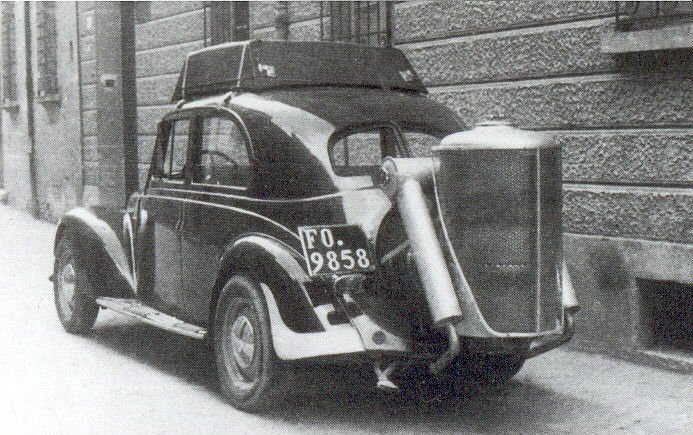History of Taxi Gdansk
- Damian Brzeski

- May 25, 2023
- 9 min read
Updated: Jun 13, 2024
History of a Taxi in Gdańsk Through My Eyes
Why won't my children follow in their father's footsteps. I will tell you here how the history of the Gdańsk taxi looked like through my eyes.

I would like to introduce you to the profession of a taxi driver and at the same time answer the question: why is it a great job with no future.
Why my children will never follow in dad's footsteps, even though dad likes this job very much and will stay in this job for a while.
And finally, why this profession has such a reputation.
So...
It is impossible to write about any profession without knowing the history of a given profession.
I mean, it's possible..., but then it's just a subjective opinion, and without even a slight outline of the story, it's just demagoguery.
The profession of a taxi driver is not as old as you might think, although the first individual transport on request, like Uber - but on horse-drawn carriages - dates back to the Middle Ages, and more to the Renaissance.
What would Bolt be if not for the first transports ordered by telegram? Would there ever have been food delivery services like Uber Eats if it wasn't for the first horse couriers?
Really, if you think about what profession you do, how people came to what we have today, it brings tears to your eyes. Along with it, there are also reflexes of disgust and we are not talking here about the old smell of the streets, but about how work sometimes looks today.
But let's not be so global, let's talk about taxi from my perspective as a citizen of Gdańsk.
At the beginning, a delicate history.

Here I will not say anything wiser than what was written by an outstanding expert on history, Mr. Andrzej Januszajtis.
The first public transport institution in Gdańsk can be considered the Municipal Court at the end of ul. Ogarna, mentioned for the first time in 1448. The buildings preserved to this day housed the municipal stables and coach houses. In 1619, it was extended according to the design of Hans Strakowski. As Marton Csombor, a Hungarian teacher who visited Gdańsk at that time, wrote: "... the citizens of Gdańsk rarely keep horses, but several hundred steeds are kept for the use of the city; there - rich or poor - he gets a horse and a coachman for his own money." Nevertheless, most transport needs were met by private carriers, from whom it was possible to rent a cart, a cradle or a horse carriage at any time.
Let's just think about what amazing times those were. What could it have looked like then...
Today you order a fare using an application, and once you put on your comfortable leather shoes and had to walk half the city - probably not everywhere yet paved - on what was left of horses, people or the remains of the morning toilet thrown out of the windows.
Today, a passenger is offended if you forget to close the air circulation while passing through Szadółki, and in those days, smells of similar beauty were everywhere and definitely more intense.
Whatever, our beautiful city was already really well developed then. Just like today many night "night riders" hunt for drunk Norwegians, so in the past you could meet Scots, Dutchmen, Swedes or whoever came here on the streets of our "Hansatic" city.
Rębiechowo was such an airport - there was a long seafront at that time.
Life was bustling here, and instead of "Rozi" or "Bodega", the ladies stood around the corner of the city gates.
It could have been... and I bet we can easily find a lot of analogs today, several hundred years ago.
The first "How Much

In 1654, the English traveler Robert Bargrave and his companions "hired one of the berths, which are very nice and comfortable here." The richest townspeople had their own means of transport. The multitude of carriages of all kinds testified to the ambition and wealth of the richest city in the Commonwealth. However, there was still a lack of public transport in today's sense of the word. The first such solution in the country was in 1692 the launch, following the example of the Netherlands, of a barge drawn by horses from the so-called Mleczny Piotra (in the area of the gasworks at the mouth of the Motława River to the Vistula River) to Wisłoujście. Previously, passengers and crews of ships were transported by fishermen, pilots and roadstead overseers. Two boats departed every hour from the end points of the route and passed each other halfway. Two years later, an additional barge was launched, transporting people from the city to Mleczny Piotr. A ride to Wisłoujście cost 4 shillings. Permissible number of passengers was 25 to 30. The city leased the line to private carriers. The line was in operation until the second half of the 19th century, later the barges had to give way to more and more developed steam units.
At all times, ferries were also a means of public transport. In 1725, attempts were made to introduce litters on land, but the City Council rejected the application on the pretext of insufficient width of the streets. Over time, a prototype of a cab appeared in Gdańsk in the form of the so-called taradajki. As Daniel Chodowiecki wrote in 1773, it was "a nice, very light convertible for two people, drawn by two horses, transporting people in the area from one town to another", for an appropriate fee. Stopping places were in front of the Wyżynna and St. Jacob. They could also be rented for a period of time. In 1812, taradajkas were numbered. They ran for over half a century. In 1852, after the railway was brought, slightly larger covered carriages appeared, taking up to four passengers. The old stopping places were replaced by new ones in front of the station at ul. Toruńska, and from 1900 also under the new (current) Main Railway Station. At that time, cabs were already equipped with taximeters. From them it was only a step to taxis.”

Am I the only one who thinks it already looked like today?
Actually, two hundred years ago, today's taxi took shape.
Berets near the train station or bus station, ferry to Wisłoujście (by the way, it's a pity that it doesn't sail anymore).
Taxis with taximeters, and the only difference is that instead of 80 wild ponies in a Fiat Tipo or another Skoda Fabia, we had a draft horse - probably from Podlasie or from another reputable breeding.
I wonder when the first scams and the fourth tariff started?
Whatever, even then this transport was for the more affluent and for those townspeople who kept a little less money in their purses.
Today we have or a moment ago we had Gold Taxi, Merc or S -class Taxi, and after dear side, Dayan, As, CityDrivers. Names, like in times of globalization, strongly refer to English, so Mr. Robert Bargrave would probably find his place today.

A little closer to the present
But ok, we're talking pretty much prehistoric here about how we live today.
You just have to remember that our city, which is Gdańsk, has always been a pearl in the crown of either Royal or Prussian Poland.
Here we had the same as in the West - technical novelties of wealthy townspeople, spices and preserves from all over the world.
Don't let anyone tell you that we've always been assholes, because we never were.

Let's go back to modern times or those that our grandparents remembered or our parents know from stories. The interwar period in the Free City of Gdańsk must have been something beautiful.
Of course, if you were a German or at least a native townsman fluent in Prussian.
Let's face it, this city was as free then as Belarus is free today.
The beginnings of the taxi as we know it today.

Some people will probably be a bit surprised, but the taxi as we know it today in the Tri-City is over a hundred years old.
Of course, let's skip the fact that there was no internet, Pudelek and TikTok back then, and ordering a fare resembled what slightly older residents remember not so long ago from the times of Mytaxi.
The second revolution was, of course, the appearance of the first cars as taxis, which were called "auto-drożki" (Autodroschken, also: Kraftdroschken). When did the first car-taxi hit the streets of Gdańsk? It probably took place in 1908 - it was a taxi belonging to the Gdańsk Automobile Center "Stielow&Förster" Sp. z o. o. It was the company that was the first "seriously" to deal with the issue of motorization on the Motława River: it was a representative of the leading brands for the entire West Prussia of that time, opened its own garages, gas stations and workshops (we will tell you about the beginnings of motorization or gas stations in former Gdańsk another time).
Stielow&Förster was soon followed by other entrepreneurs and private drivers. While in 1910 there was only one bay for this type of taxi (at Targ Węglowy), a year later there were four: in addition to the aforementioned one, also at Długi Targ, in front of the main railway station and on the market square in Wrzeszcz.
Another revolution in the world of Gdańsk taxis took place in the spring of 1929. At that time, the first telephone number was launched in Gdańsk where you could call and order a taxi to the indicated address ("Autoruf Groß-Danzig"). The service covered the entire area of Gdańsk and Sopot.
At the same time, small columns with space for advertisements and a handset appeared at the most important taxi ranks. From these free machines, you could also order a taxi from the street, if there was no vehicle in the bay at the time. Within a few years, competition appeared - in Gdańsk there were usually 2-3 similar companies, each of course running a separate, competitive number."

I am asking you, a Gdańsk taxi as you can see, let's forget about the dates, let's add a few stops to a few blocks of flats in Gierek and we have today's tariff.
It's nice, but then came the war, which practically mowed down the taxi transport. The cars were either confiscated or the drivers were conscripted into the army, and the Gdańsk that those drivers knew was gone after a few years.
Later came communism, at first the "Stalinist" one, after a while Khrushchev or Brezhnev, and life in this place was nothing like this beautiful center of Central Europe, the gateway to the world which was our port city.
But in the hopelessness of the Russian mir, new neighborhoods sprang up, the distances to be covered by the inhabitants became greater and greater, and of course the public transport offer was as good as the chocolate imitation products.
The market does not like a vacuum anywhere, so in the commune where you had to save half your life for a licensed copy of gauze with a mermaid on the hood, private and state transport companies were established.
And here I would put a big, big dot, I need a comma...
Free market = Beginning of decline

90s
This is the moment, even the genesis of today's problem in this profession. Probably in a few others, but since I'm a taxi driver by choice, let's focus on thieves and scammers, zlotys ... phew ... taxi drivers.
Commune, or rather its end, is still warmly remembered by some older taxi drivers.
It used to be... Customers were banging on doors and windows. I left at 8, and by lunchtime I had a month's worker's wages.
These stories of moss and ferns, worse, most often did not differ much from the truth.
At a time when a private entrepreneur was considered by the state apparatus as an embezzler, smuggler, fraudster and thief, it was in the profession of a taxi driver that you could seriously find all the hated activities.
The dignitaries were transported only to later take the priest to the girls, then sell some currency, and at the end he would stand at a stop shouting out the window that he was going to Oliwa and would take only those who were going that way.
Well, how can you not love these good people behind the wheel.

My older colleagues often mention with a tear in their eye that it used to be respect, that you used to be the chauffeur.
Hmm, once upon a time, but they can't remember those times. Mr. taxi driver was a man who drove passengers around the free city in the interwar period, not this capitalist, rotten to the core, making money in the socialist land of prosperity and cheap vodka.
Summary
It is said that we Poles are such an envious nation, full of complexes and instead of thinking about development, we only think about making our neighbor worse off than us.
There's some truth to that, but trust me, others are pretty twisted too, and sometimes even better.
Except that taxi drivers really deserve it, technically this profession is doomed to disrespect.
How can you love someone who certainly has no respect for you, you are just a sheep to be sheared, a "mink" to be transported or a British to be deleted. I would like to believe that this is not the case, but whoever I have not met, the longer he is in the profession, the more he behaves like a gold.
But there is an opportunity for this profession called: automation!
































































Comments